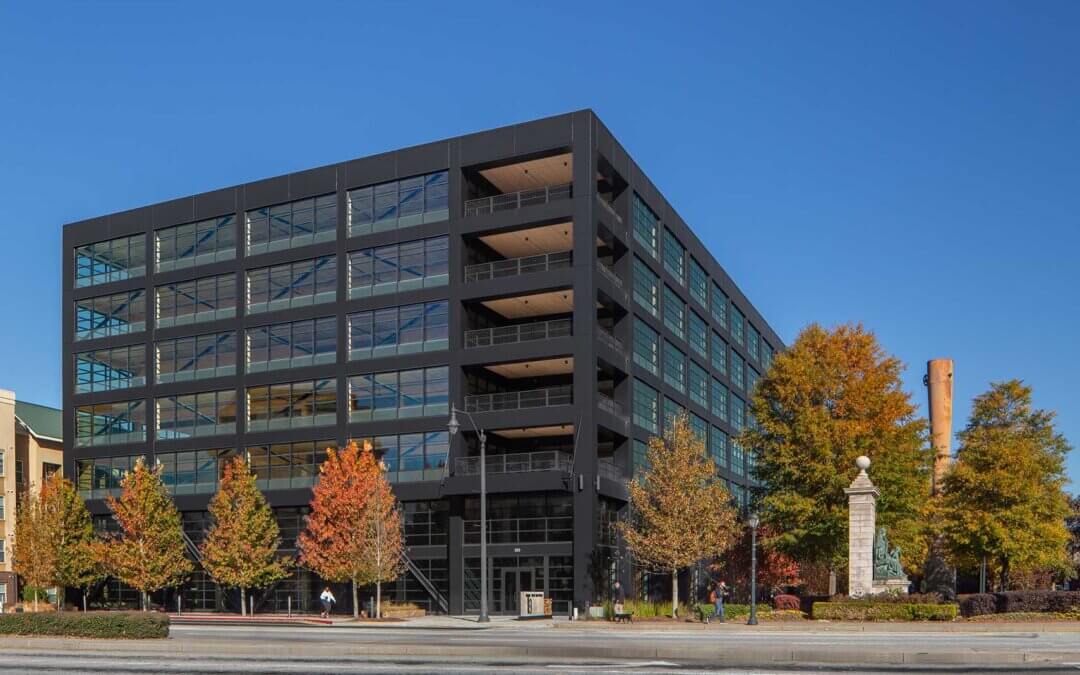This article was written and published by Metropolis online HERE on May 17, 2021.

The Sterling Road development in Toronto, Ontario, designed by DLR Group using mass timber is expected to be complete in 2023.Courtesy DLR Group
For centuries, wood has been prized for its beauty and tactile qualities—“Wood is the most humanly intimate of all materials,” said Frank Lloyd Wright. In the field sustainable architecture, wood is experiencing a renaissance, in the form of mass timber, which is finding growing acceptance as a structural building component. A recent Think Tank entitled “Working with Timber – New Possibilities for Design, Construction and Sustainability” brought experts from the design and timber industries together to discuss and celebrate this remarkable transformation.
“Wood has been a revolution in the design and construction industry,” began Avinash Rajagopal, editor in chief of Metropolis and moderator of the conversation, which was hosted by DLR Group.
John Carmichael, vice president of New South Construction out of Atlanta, offered a quick anecdote about a multi-story Atlanta project whose base structure is mass timber.
“I’ve been in this business for twenty years, and as this building was going up, I’ve never had so many people ask me about a project,” Carmichael said. “We had people stopping us in the streets, calling us; the reaction was always ‘Wow’.”
Pete Kobelt, U.S. sales and business development manager for Element5, a mass timber manufacturer, averred that wood is a renewable resource—and then offered a dramatic example of just how renewable it is. He described two university buildings in Arkansas that used a total of 5 thousand cubic meters of structural wood. He went on to say that Arkansas, with its vast forests, is a state with 19 million acres of trees that grow 71 tons of wood fiber every 60 seconds.
“In three hours, we could regrow the two buildings at the university,” he said.
Jacob Mans, an architecture professor at the University of Minnesota, chimed in that preserving and regrowing this natural resource requires proper forest management.
“The future of mass timber is the forest,” he said. “We have to think about our woodlands and how we manage them. A well-managed forest is not one you’re not touching; we need to have people come in and make a timber harvest. We have to be constantly asking ourselves what a well-managed forest looks like.”
Mass timber is sustainable because it allows younger trees to be harvested instead of trees in old growth forests in sensitive areas. And that in the process it locks away carbon that’s been taken out of the atmosphere by those trees.
The one practicing architect on the panel, Stephen Cavanaugh of the DLR Group in Chicago, urged the group to “look to Europe for precedent projects.” Cavanaugh leads a wood design studio at DLR and said the group currently has two million square feet of timber projects completed or on the boards.

A mass timber building in Atlanta, Georgia was designed by DLR Group in collaboration with HPA.Courtesy Rion Rizzo
“A wood structure is beautiful,” he said. “We approach these projects with a heightened level of design. It’s all about celebrating wood.” But further, he added, “there’s research around the cognitive advantages of being introduced to biophilia,” of which wood is a premier example, he said.
The group agreed that current timber projects range from office and retail to hospitality and multifamily. Local building officials, they said, are slowly coming up to speed.
“Various jurisdictions have adopted tall wood provisions,” said Kobelt. “Talking with local officials is now a much easier conversation. It’s changed the reaction in the building and fire department realms.”
But there are still challenges ahead, and education that needs to be done, he concluded.
“Gluing the boards together is the easy part.”
